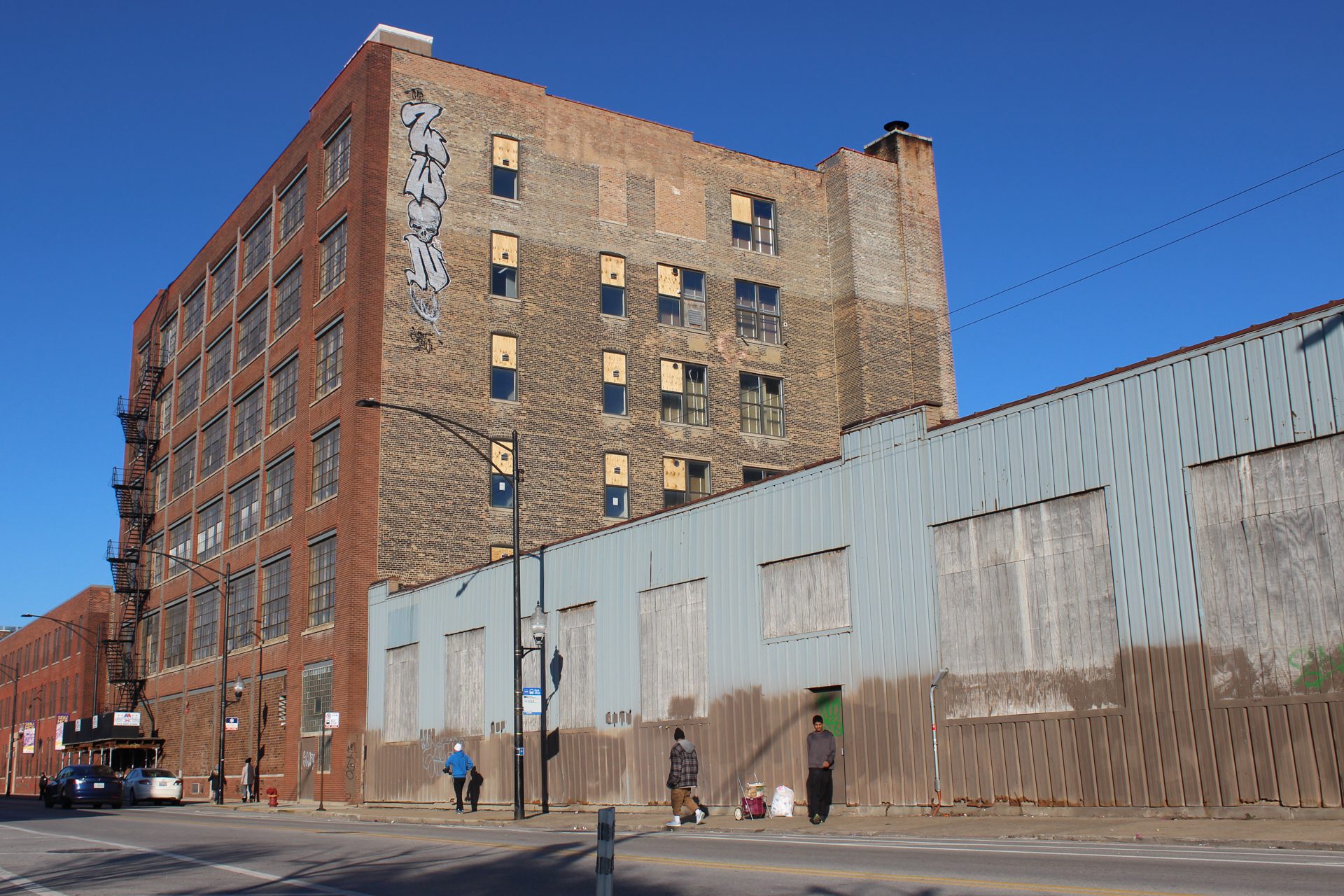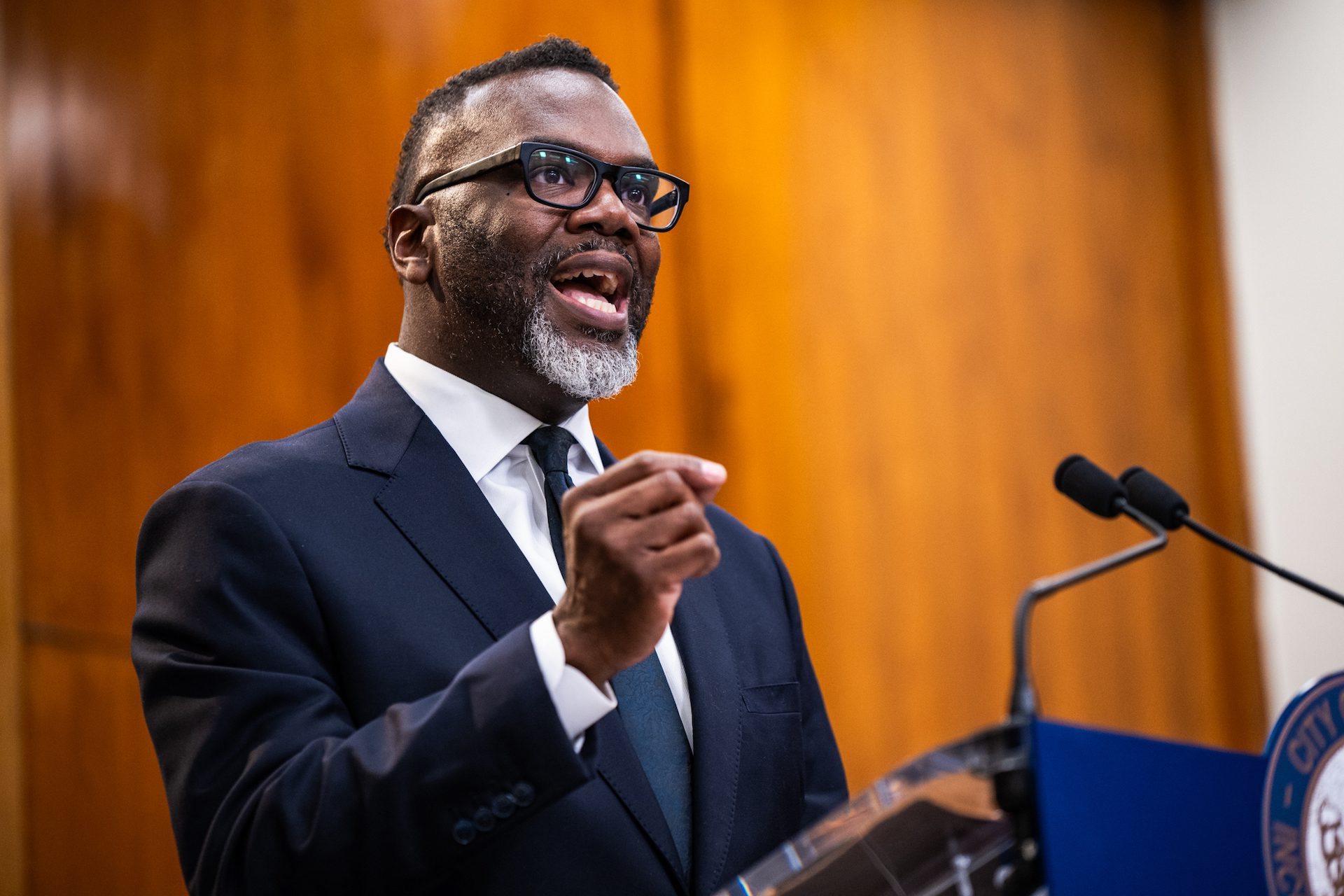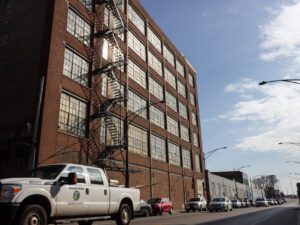 Mauricio Peña/Borderless Magazine
Mauricio Peña/Borderless MagazineEl nuevo sistema ofrecerá 6.800 camas a pesar de la necesidad prevista de 11.000 plazas para todos los habitantes de Chicago sin hogar.
Chicago dejará de destinar nuevos recursos a los centros de acogida de inmigrantes al fusionar sus sistemas de acogida de recién llegados y de personas sin hogar para 2025.
En una rueda de prensa celebrada el lunes, los responsables municipales detallaron los planes de la "Iniciativa de un Sistema Único", que incluye reducir los recursos destinados a los inmigrantes al tiempo que se agiliza el acceso a los servicios para todos los residentes en riesgo de quedarse sin hogar. El despliegue comenzará esta semana y se prolongará hasta finales de año.
La "Iniciativa de Sistema Único" de la ciudad pretende abordar las desigualdades que existen desde hace tiempo en los sistemas de acogida combinándolos en una red de servicios integral, según los responsables municipales.
Noticias que ponen el poder en el punto de mira y a las comunidades en el centro.
Suscríbase a nuestro boletín gratuito y reciba actualizaciones dos veces por semana.
"Estamos construyendo un sistema único de albergues que nos permite responder a la falta de vivienda... tanto si acabas de llegar como si llevas aquí algún tiempo y estás en la ruina", dijo el alcalde Brandon Johnson.
El mes pasado, funcionarios municipales y estatales anunciaron recomendaciones para la fusión tras recabar la opinión de las organizaciones comunitarias. Según el plan, las autoridades municipales añadirán 3.800 camas del sistema de albergues para inmigrantes a las 3.000 que se ofrecen actualmente a las personas sin hogar. Unos 5.000 recién llegados se alojan actualmente en los albergues para inmigrantes de la ciudad.
Johnson dijo que se preveía la necesidad de "hasta 11.000 camas de alojamiento para atender a todos los habitantes de Chicago sin hogar, incluidos los recién llegados".

A la pregunta de si se dispondrá de más camas en el futuro, los responsables municipales afirmaron que se necesitaban más inversiones antes de que el nuevo sistema dispusiera de más camas de acogida.
Las autoridades municipales y estatales también tienen previsto abrir un nuevo refugio en Rogers Park antes de diciembre. Los albergues para inmigrantes nuevos y los ya existentes serían gestionados por organizaciones comunitarias, en sustitución del controvertido proveedor Favorite Staffing, que ha supervisado muchos de los albergues para inmigrantes de Chicago.
"Ahora mismo, tenemos unos 557 empleados de Favorite", dijo Brandie Knazze, comisionada del Departamento de Servicios Familiares y de Apoyo de Chicago. "Y así, a medida que vayamos cerrando esta misión, iremos cerrando también el contrato de Favorite".
Otros cambios son:
- Creación de un sistema para solicitar camas de acogida a través del servicio 311 de la ciudad por orden de llegada.
- Reducción del horario de la zona de desembarque de recién llegados para el 1 de noviembre y cierre de la zona de desembarque y del centro estatal de admisión para el 31 de diciembre.
- Supresión de las prórrogas de 30 días para las personas que esperan respuesta a sus solicitudes de prestaciones públicas
- Limitar la disponibilidad de nuevos albergues para inmigrantes que hayan llegado a Estados Unidos en los últimos 30 días
Las autoridades municipales explicaron que la decisión de reducir el sistema de albergues para inmigrantes y empezar a invertir en un sistema unificado se produce cuando el número de recién llegados a Chicago ha disminuido en los últimos meses.
"Sabemos que es el momento adecuado", dijo Beatriz Ponce de León, teniente de alcalde de la ciudad para los Derechos de los Inmigrantes, Migrantes y Refugiados. "La ciudad no ha recibido un autobús en la zona desde mediados de junio, y las llegadas a la Zona de Desembarco son mucho menores".
Como parte del nuevo plan, la ciudad y el estado también restablecerán su programa de ayuda al alquiler para ayudar con las necesidades de vivienda de los residentes del refugio.
La ciudad podría enfrentarse a dificultades a la hora de implantar este nuevo sistema. Según las recomendaciones publicadas anteriormente, los miembros de la comunidad citaron anteriormente las dificultades para acceder a una cama en un albergue debido a la falta de disponibilidad en el sistema de albergues para personas sin hogar de la ciudad y las dificultades para utilizar los servicios del 311 para solicitar una cama en un albergue.
"Las personas con experiencias vividas han identificado retos y barreras con este proceso [para acceder a una cama de refugio en el sistema existente de refugios para personas sin hogar de la ciudad], citando la dificultad para conectarse a un refugio". según el informe de la Iniciativa "Un Sistema" publicado el mes pasado.
El alcalde Johnson dijo que se dispondría de más detalles sobre el presupuesto potencial del sistema combinado una vez que la ciudad finalizara su presupuesto para el próximo año fiscal.
Katrina Pham es la reportera de participación comunitaria y redes sociales de Borderless Magazine. Envíe un correo electrónico a Katrina a [email protected].
Fatema Hosseini es becaria del Roy W. Howard Investigative Reporting que cubre las comunidades inmigrantes para Borderless Magazine. Envíele un correo electrónico a [email protected]


